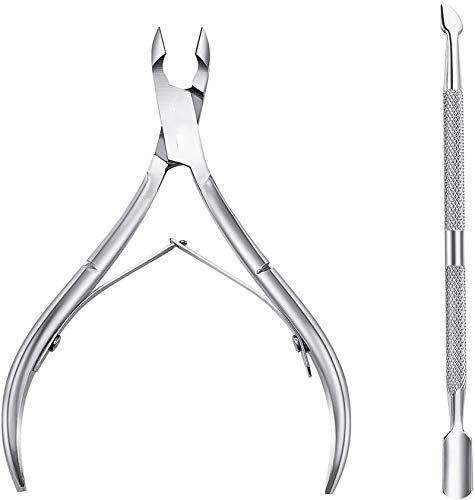Understanding Cuticle Nippers: A Beginner’s Guide
If you’re just starting out in the world of nail care, you might be wondering what kind of tools you need to achieve salon-quality manicures and pedicures at home. One essential tool that shouldn’t be overlooked is the cuticle nipper. But with so many different types of cuticle nippers available, which one is right for you?
The Different Types of Cuticle Nippers
Before you choose a cuticle nipper, it’s important to know that there are several different types available. The most common types are the standard, jaw-type nipper, the scissor-type nipper, and the 1/4 jaw nipper. Each type has its own pros and cons depending on your needs and preferences.
Considerations When Choosing a Cuticle Nipper
When choosing a cuticle nipper, there are several factors to consider. First and foremost, you want to make sure it’s made from high-quality materials that will last. Stainless steel is the most common material used for cuticle nippers, but some brands use coated or plated steel that may rust or tarnish over time.
Another consideration is the size and shape of the nipper. Standard jaw nippers have a curved blade that’s ideal for trimming the cuticles around your nails, while scissor-type nippers have a straight blade that works well for trimming hangnails and other small areas of skin.
Finally, you should consider the grip and comfort of the nipper. Look for a tool that has an ergonomic design and a non-slip grip to ensure that you can use it comfortably and safely for prolonged periods of time.
Our Top Picks for Cuticle Nippers
After researching and testing multiple cuticle nippers, we’ve narrowed down our top picks:
- Sephora Collection Cuticle Nipper – This affordable and durable nipper has a comfortable grip and a sharp blade that easily trims cuticles without tearing or snagging.
- Tweezerman Rockhard Cuticle Nipper – This professional-grade nipper is made from high-quality stainless steel and has a jaw that’s perfectly balanced for precision trimming.
- Revlon Gold Series Titanium Coated Cuticle Nipper – This stylish and affordable nipper is coated in titanium for extra durability and has a sharp, pointed tip that’s perfect for precision cuticle work.
Caring for Your Cuticle Nipper
Once you’ve invested in a high-quality cuticle nipper, it’s important to take proper care of it to ensure that it lasts as long as possible. After each use, wipe the blade with rubbing alcohol to sanitize it and prevent bacteria from growing. Store the nipper in a dry, cool place to prevent rust, and avoid dropping it or using it on hard objects that could dull or damage the blade.






